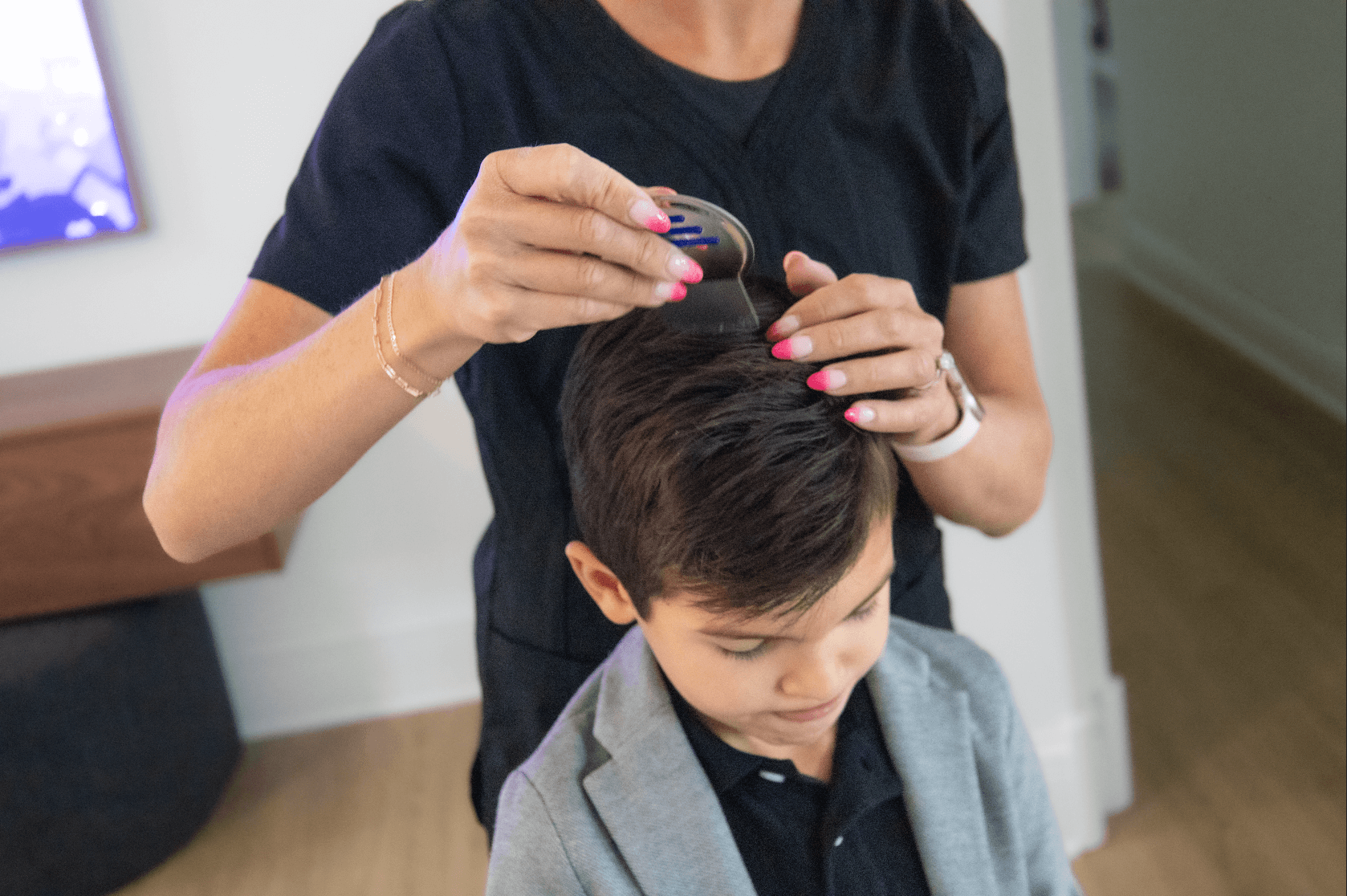

Understanding Head Lice and the Spread Among Children
Head lice are tiny, wingless insects that infest the hair and scalp of children, causing discomfort and frustration for both kids and parents alike. These little pests are commonly found in schools and daycare centers, where they quickly spread from one child to another through close contact.
Lice transfers happen when kids share hats, combs, and brushes. Lice can crawl from one head to another, quickly making themselves home in a new child’s hair.
They feed on small amounts of blood from the scalp and lay eggs, called nits, which attach to the hair shafts.
Prompt and effective treatment is crucial when dealing with head lice. Many lice treatment options for kids are available from professional services and do-it-yourself options. By understanding the choices, you can quickly act once you notice a little critter in your child’s hair.
Signs & Symptoms of Lice Infestation
Knowing the signs and symptoms of lice infestation is crucial for prompt intervention. Keep an eye out for the following signs:
- Persistent Itching: Lice bites can cause intense itching, specifically behind the ears, the bottom of the neck, or the scalp. If your child complains of itching or you see them scratching their head frequently, it’s time to investigate.
- Visible Lice or Nits: Carefully inspect your child’s hair and scalp for lice or nits. Adult lice are small, about the size of a sesame seed, and can be beige, brown, or gray. Nits are tiny eggs sticking to the hair shaft and look like white or yellowish oval-shaped dots.
Remember, if you see lice or nits, your child has lice, and immediate action is necessary. If you even question the chance of your child having head lice, consult a professional or school nurse for a proper diagnosis.
Lice Treatment Options
When it comes to treating lice in children, several options are available to you. Let’s start with the most effective and efficient and work our way down.
Professional Lice Treatment Options
- Cold Air Treatment: This non-chemical treatment involves using a device that blows extremely cold air onto the scalp to freeze and kill lice and nits. It is a safe and effective option.
- Hot Air Treatment: Similar to cold air treatment, hot air treatment uses a device to blow hot air onto the scalp, dehydrating and eliminating lice and nits. It is a chemical-free alternative that can be considered.
- Comb-Out Method: Using a fine-toothed comb, the comb-out method involves manually removing lice and nits from the hair. While time-consuming, it is a chemical-free approach that can be effective, especially when done meticulously.
Prescription Treatments
Healthcare professionals may prescribe specific medications or topical treatments to eliminate lice infestations. These prescription treatments often contain stronger ingredients than OTC products and should be used as directed. We recommend you consult your healthcare professional to learn about your options, instructions, and side effects.
Over-the-Counter (OTC) Treatments
OTC lice treatment products, such as shampoos, sprays, or lotions, are readily available at pharmacies and supermarkets, like lice treatment shampoo at Walmart. These products typically contain active ingredients that kill lice or inhibit their ability to reproduce. Follow the instructions carefully and consider any age restrictions or precautions mentioned on the packaging. We recommend you consult your healthcare professional about your options, education and side effects.
Home Remedies
Some home remedies such as mayonnaise, vinegar, or essential oils are often suggested for lice treatment. However, it’s important to note that their effectiveness has limited scientific evidence and may not wholly eradicate lice infestations. Consult with a healthcare professional before relying solely on home remedies.
Preventive Measures to Avoid Getting Lice
Preventing lice infestations in children is critical to maintaining a lice-free environment. While it’s not foolproof, there are things you can do to help prevent the little critters from taking over.
Steps to avoid lice
- Perform Regular Hair Inspections: Check your child’s hair and scalp regularly, especially after they have been in close contact with other children.
- Avoid Head-to-Head Contact: Discourage your child from sharing hats, hair accessories, and other items that bring their head in contact with others.
- Encourage Children to Use Their Things: Ask your child to use their things, such as combs, brushes, hats, and accessories. Sharing these things can facilitate infestation.
- Teach Your Child: Children are sponges, so teach them about lice. Explain what it is, how it spreads, and what to do if they think they have it.
By implementing preventive measures, you can help reduce the likelihood of lice infestations in your home. Stay proactive. The more you check, the easier it will be to identify any changes, and your child will be used to the process and may fuss a little less every time you look.
Prevention is key but not a cure. Lice infestations can still occur. If your child does get lice, it’s essential to address it promptly and seek appropriate treatment to prevent further spread.
Frequently Asked Questions:
Treating the entire family is unnecessary unless other family members show signs of lice infestation. Focus on treating the affected individual and take preventative measures to minimize the spread of risk.
